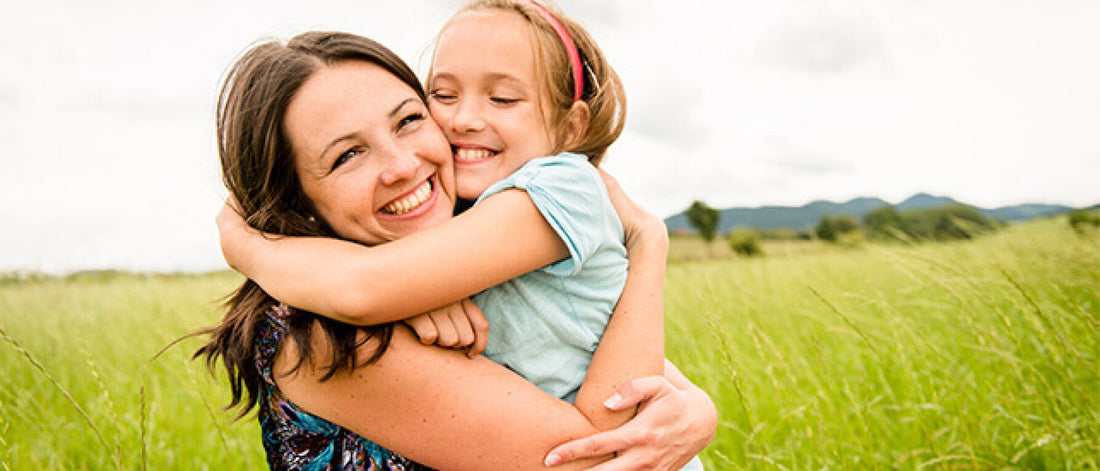In children, stress, anxiety, and ADHD can present a multitude of behavior issues ranging from anger, defiance, lethargy, and acting out. According to child psychiatrist Elizabeth Roberts in her Washington Post article, “Psychiatrists are now misdiagnosing and overmedicating children for ordinary defiance and misbehavior.” In a recent report released by the Centers for Disease Control, more than 13 percent of American boys and more than 5 percent of American girls between the ages of four and 17 have been diagnosed with ADHD. 69 percent of these children are taking medication for ADHD. Stress and anxiety levels for teens are at an all-time high, according to Lynn Lyons, a child anxiety expert and author of Anxious Kids, Anxious Parents.
Parents are worried. Fortunately, there is an alternative to drugs for managing child anxiety and other disorders: meditation.
Meditators have experienced the stress-relieving effects of meditation for ages, and now their experiences are backed by scientific evidence. It has been proven to decrease ADHD in adults, and experts are saying it could help control behaviors like hyperactivity, defiance, and anxiety in children as well. Why, then, do so many parents choose to medicate rather than meditate?
What meditators have known for ages is now being backed by scientific evidence. The American Academy of Pediatrics published an article that shows that meditation is a useful intervention in physiologic, psychosocial, and behavioral conditions among youth.
Children can experience stress when they struggle in school, when you ask them to sit still when they want to move around, or when they feel pressure to behave in a certain manner. Their bodies react to stress by activating the fight-or-flight system. This system was designed to help when stressors were things like being chased by a predator or fighting with a neighboring tribe. A math quiz in sixth grade wasn’t what this system was designed for. Because of this, stress can cause the following effects on children’s health:
The great thing is, when children begin a meditation practice, they can feel the changes in their bodies and may be naturally drawn to continue the practice. Finding a practice that is easy for you and your children to participate in on a daily basis simply takes a little bit of exploration.
If you want to try this at home, here are a few quick tips to keep in mind.
Mindful Coloring: Focusing on a single activity like coloring lets the mind practice being present. Do it with your children for an added bonus of connection. There are no shortage of coloring books available—or use your creativity and make a bubble-letter drawing of their names, their top character traits or a goal they have.
Nature Walk: Spending time outside is great for your children’s health. Encourage them to focus on what you are seeing or hearing as you walk. Try a silent walk or one where you take turns leading.
Dance It Out: A five-minute kitchen dance party—while preparing dinner or before homework—is fun for the whole family. Take turns choosing the song and focusing on fun. Despite popular belief, mindful moments don’t just happen when you sit in a lotus position; they can happen when you are in any joyful flow activity.
Gratitude Practice: Taking time with your children to acknowledge all the good things they have in their lives is powerful. At dinner, ask everyone to share the best moment of the day and one thing they are grateful for.
Pay-It-Forward Practice: Model the law of giving and receiving for your children. Simple pay-it-forward practices like coffee karma (where you not only buy your coffee, but also pay for the one behind you) or random acts of kindness (when you do something kind for someone without being asked) allow your children to see that kindness matters and that by giving to someone else you receive a warm feeling that lasts and spreads.
Remember, as parents, the role is to teach children how to cope with stress, anxiety, and extra energy; not to manage it for them.
Parents are worried. Fortunately, there is an alternative to drugs for managing child anxiety and other disorders: meditation.
Meditators have experienced the stress-relieving effects of meditation for ages, and now their experiences are backed by scientific evidence. It has been proven to decrease ADHD in adults, and experts are saying it could help control behaviors like hyperactivity, defiance, and anxiety in children as well. Why, then, do so many parents choose to medicate rather than meditate?
Doctors’ Orders for Childhood Stress
Most doctors have been educated in prescribing pharmaceutical interventions for problems like hyperactivity, anxiety, sleep disorders, and stress. There is a movement toward changes in diet and lifestyle, or alternative healing modalities, but change can be slow.What meditators have known for ages is now being backed by scientific evidence. The American Academy of Pediatrics published an article that shows that meditation is a useful intervention in physiologic, psychosocial, and behavioral conditions among youth.
Children can experience stress when they struggle in school, when you ask them to sit still when they want to move around, or when they feel pressure to behave in a certain manner. Their bodies react to stress by activating the fight-or-flight system. This system was designed to help when stressors were things like being chased by a predator or fighting with a neighboring tribe. A math quiz in sixth grade wasn’t what this system was designed for. Because of this, stress can cause the following effects on children’s health:
- Increased blood pressure
- Insulin resistance
- Imbalanced hormones
- Weakened immunity
- Increased blood clotting ability
- Digestive disorders
- Coronary heart disease
- Anxiety, insomnia, and addictions
- Diabetes
- Infections
- Heart attacks and strokes
- Digestive disease
How Meditation Helps Reduce Stress
Meditation naturally counteracts the effects of the fight-or-flight reaction by:- Lowering heart rate
- Normalizing blood flow
- Slowing down the breath and extending the inhalation and exhalation
- Reducing release of stress hormones
- Strengthening immunity
If You Can’t Calm Your Mind, How Can Your Eight-Year Old?
Thinking your children need calm minds to meditate is kind of like saying you need to be in shape before you go to the gym.The great thing is, when children begin a meditation practice, they can feel the changes in their bodies and may be naturally drawn to continue the practice. Finding a practice that is easy for you and your children to participate in on a daily basis simply takes a little bit of exploration.
If you want to try this at home, here are a few quick tips to keep in mind.
- Children are usually able to sit for as many minutes as their age (e.g., nine minutes for a nine-year-old or seven minutes for a seven-year-old). Children younger than five years can practice mindful activities or simple breath activities (see list below).
- Model the behavior you want to inspire: Meditate with your child. If you have a meditation practice already, include them. If you are starting fresh, you can experiment with guided, silent, or mantra meditations.
- Set your children up for success and they will return to the practice more easily. Give them a special crystal to hold or make it part of their bedtime routine.
- Talk with your children about the way they feel after meditating. Celebrate the changes they notice or point out changes that you notice that they might be unaware of.
Beyond Meditation: Mindful Activities for Kids
Square Breathing: Teach your children this simple breath pattern. Inhale as you count to four, hold as you count to four, exhale as you count to four, and hold as you count to four. Guide your children to use this practice when they feel any powerful or overwhelming feelings. It can calm them, reduce fight or flight, and teach them that they can control their bodies’ reactions.Mindful Coloring: Focusing on a single activity like coloring lets the mind practice being present. Do it with your children for an added bonus of connection. There are no shortage of coloring books available—or use your creativity and make a bubble-letter drawing of their names, their top character traits or a goal they have.
Nature Walk: Spending time outside is great for your children’s health. Encourage them to focus on what you are seeing or hearing as you walk. Try a silent walk or one where you take turns leading.
Dance It Out: A five-minute kitchen dance party—while preparing dinner or before homework—is fun for the whole family. Take turns choosing the song and focusing on fun. Despite popular belief, mindful moments don’t just happen when you sit in a lotus position; they can happen when you are in any joyful flow activity.
Gratitude Practice: Taking time with your children to acknowledge all the good things they have in their lives is powerful. At dinner, ask everyone to share the best moment of the day and one thing they are grateful for.
Pay-It-Forward Practice: Model the law of giving and receiving for your children. Simple pay-it-forward practices like coffee karma (where you not only buy your coffee, but also pay for the one behind you) or random acts of kindness (when you do something kind for someone without being asked) allow your children to see that kindness matters and that by giving to someone else you receive a warm feeling that lasts and spreads.
Remember, as parents, the role is to teach children how to cope with stress, anxiety, and extra energy; not to manage it for them.






















